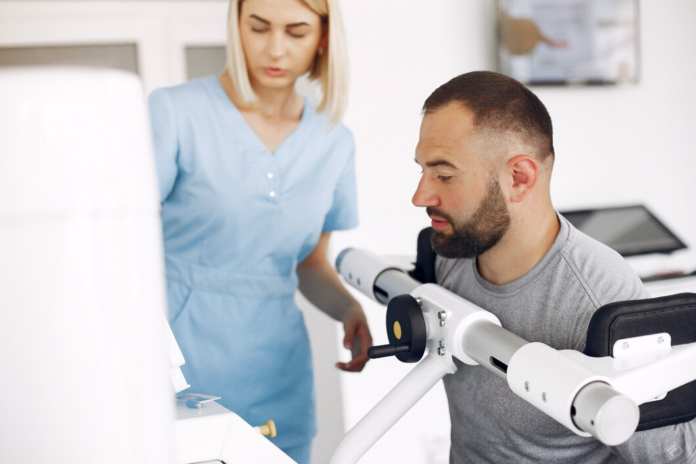Decompression therapy has become a key component in modern orthopedic rehabilitation programs. This non-invasive technique aims to alleviate pain and promote healing by gently stretching the spine. It is increasingly utilized to treat conditions like herniated discs, sciatica, and other musculoskeletal issues. This treatment is gaining popularity for its ability to relieve pressure on the spine, improve mobility, and support overall recovery.
What is Decompression Therapy?
Decompression therapy refers to a form of spinal traction designed to relieve pressure on the spine and its discs. During the therapy, the patient is positioned on a special table that gently stretches the spine, creating a negative pressure effect. This process can help to reposition discs, reduce nerve compression, and promote better circulation. It is often used as a non-invasive alternative to more traditional forms of treatment, such as surgery.
How Decompression Therapy Supports Orthopedic Rehabilitation Programs
In orthopedic rehabilitation programs, decompression therapy plays a vital role. It is particularly beneficial for patients recovering from injuries or surgeries related to the spine and surrounding muscles. The therapy helps in realigning the spine and easing pressure, which accelerates the healing process. As a part of a comprehensive rehabilitation plan, it can complement physical therapy, massage, and other treatments.
Decompression Therapy’s Role in Pain Relief and Recovery
One of the most significant advantages of decompression therapy is its effectiveness in pain management. By targeting the root cause of pain, such as a herniated disc or pinched nerve, the therapy offers relief that other treatments may not provide. Decompression therapy can help to decompress the spine, which in turn reduces nerve irritation and promotes healing.
Who Can Benefit from Decompression Therapy in Orthopedic Rehabilitation?
Decompression therapy is suitable for a wide range of patients, particularly those suffering from chronic back pain, sciatica, or spinal disc issues. Patients who have experienced herniated discs, bulging discs, or degenerative disc disease can benefit greatly from this treatment. It is also effective for individuals who have undergone spinal surgery and are in need of continued rehabilitation.
By incorporating decompression therapy into an Orthopedic Rehabilitation Program, patients can experience quicker recovery times and a reduction in pain and discomfort. The therapy is especially beneficial for individuals who have not found relief from traditional treatments.
Integrating Decompression Therapy into Your Orthopedic Rehabilitation Program
To fully experience the benefits of decompression therapy, it should be integrated into a comprehensive orthopedic rehabilitation program. This program typically includes physical therapy, strength training, and other supportive treatments. Working with a healthcare provider to develop a tailored rehabilitation plan ensures that decompression therapy complements other therapeutic methods.
Conclusion
Decompression therapy has proven to be an effective tool in orthopedic rehabilitation programs. Its ability to relieve pain, improve mobility, and promote healing makes it a valuable addition to any rehabilitation plan. As more patients seek non-invasive options to treat spine-related issues, decompression therapy offers a promising solution for faster recovery and long-term relief. By incorporating decompression therapy into a comprehensive program, individuals can experience a smoother recovery journey and return to their normal activities with ease.









